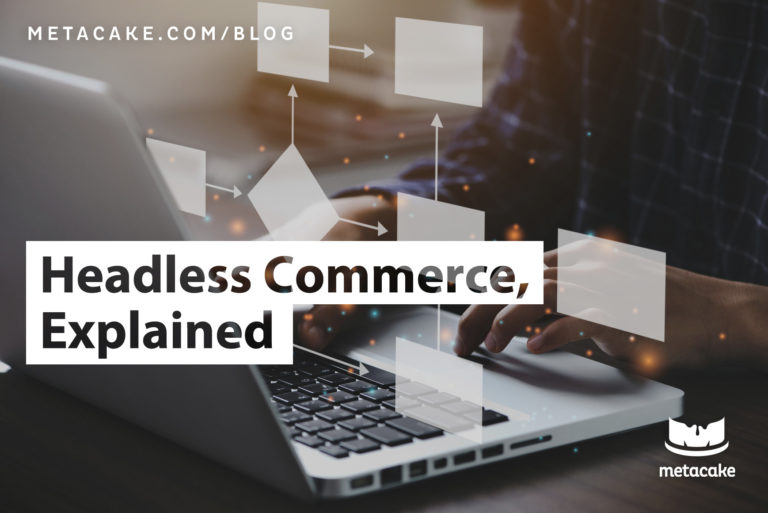What is headless commerce? While it’s a buzzword that’s gaining popularity in the DTC world, many ecommerce owners are still trying to fully understand what it means and if it’s right for them.
To explain, let’s first remember how selling online used to work. Years ago, if you wanted an ecommerce store, you would need to build the website from scratch and run it yourself (much easier said than done).
Then, platforms like Shopify Plus and Bigcommerce came along. They made the site-building process infinitely simpler and less expensive by offloading the headache of building and maintaining your own site. Things got easier and cheaper, but with that also came rigidity and less control for the store owner.
Headless commerce is an emerging solution that combines the convenience of modern platforms and tools with the flexibility and control that comes with running your own site. In this article, we’ll explain what headless commerce is, the anatomy of a headless stack, and how to know if headless is right for you.
What is headless commerce?
Simply put, headless commerce is a site structure that separates the store’s front end from the backend. It combines multiple technologies or platforms to create a more custom site. Instead of one platform handling everything, there are multiple platforms handling different components of the site. For example, that means instead of everything being built on Shopify, you could build the front end of the store using a page builder like Builder.io or Shogun, your checkout using Bold Checkout, and your store backend on Bigcommerce.
Why would an ecommerce brand use headless commerce?
Headless commerce is more complex and more expensive, so why would a company need it? If you are an ecommerce CEO or business leader considering headless, you’re likely thinking about two main benefits:
1. Flexibility: You’re looking for a way to have more customization than you can achieve on a store using one platform.
2. Control: You would like a way to have greater control over your business. It’s not out of the question for platforms like Amazon or even Shopify to shut down a brand that they don’t agree with or that violates their terms. This is a liability some businesses are concerned about. We have also seen platforms go down for periods of time due to technical issues. Breaking apart the experience allows you to spread out the risk as well as take back some control you would lose by going all-in on one platform.
How is headless commerce different than a traditional approach?
With all of this in mind, let’s break down the three options you have when building an ecommerce store and the pros and cons of each.
Traditional Method:
- The store owner uses a team of engineers, developers, and servers to build and manage their ecommerce store.
- This gives high control, but also high cost and high risk given how technical this can get.
Single Platform Method:
- The store owner builds the entire store using one platform such as Shopify or Bigcommerce. The platform handles everything except for the design, products, and marketing.
- This provides high stability, low cost, and low risk, but less room for customization.
Headless (Hybrid) Method:
- The store owner builds the front end and back end of the store on separate platforms and then integrates them. To achieve this, you’ll need more experts and resources.
- This offers higher control, lower risk, and moderate cost.
Should your ecommerce business go headless?
In short, if you’re looking for more control and flexibility, yes headless commerce would be a good option for you.
If you feel your current store platform gives you what you need, you probably do not need to switch to headless yet. However, you can still plan for it in the future, especially because diversifying your technology is always powerful.
The Anatomy of a Headless Commerce Solution
So what does the headless stack look like and what options do you have? There are three main components to consider, which we’ll outline below.
Part 1: The Store’s Front End
Your store’s front end is what your customers experience before they get to checkout. This would include your homepage, collection pages, product pages, landing pages, and more. Options you might consider to build these pages include Shogun, Builder.io, BigCommerce, or WordPress. Shopify may start allowing this in the future as well, but that’s TBD.
Part 2: The Store’s Backend
Your store’s backend is the component that handles all of your product inventory, customer orders, discount management, and logic. Options for this could include Swell, Bigcommerce, and again, there’s a chance Shopify could offer this in the future.
Part 3: The Store’s Checkout
Lastly, you’ll need a solution to handle the checkout and purchase flow. We’d recommend Bold Checkout for this or another tool called Rally. As headless commerce gains popularity, other checkout options are sure to emerge as well.
Is Headless Commerce in Your Brand’s Future?
Headless is more than a popular buzzword right now— it’s an architecture that ecommerce owners and executives should understand. Whether or not you need to move to a headless stack at this time is dependent on your brand’s unique site needs. But regardless, you should be planning for it in the future. It may be more expensive and complicated than a single platform site, but that is usually the case for more control and customization, and for many brands, the benefits can outweigh the cost.
